7 Quick Tricks for Writing Ecommerce Copy That Sells
How exactly can ecommerce merchants use copy to increase conversions? Read on to find out the secret to writing web copy that sells!
Written By
Hannah Smiddy

In the world of ecommerce, words matter. The right combination of words, carefully chosen, and arranged in just the right order, can have a surprisingly powerful effect.
Effective ecommerce copy elicits an action. It captures attention, inspires emotion and ultimately makes people click. It’s simple: better copy means better conversion rates.
Not only does it have a direct impact on conversions, good ecommerce copy defines who you are as a brand, tells your audience a story, and optimises your site for search engines.
So, what’s the secret to writing web copy that sells? There’s a whole host of tactics you can use to craft compelling copy that drives conversions, but here are seven quick tricks that you can implement right away.
#1 Connect features and benefits
Providing a list of product features will satisfy a customer’s need for factual, easily-comparable information. However, features alone will not sell a product.
As a copywriter, you need to connect the dots between the features of a product and their benefits. How will your product make a user’s life better? What problem will it solve? Sculpt your copy with the target customer in mind, highlighting the benefits you know will be most important to them. Incorporate benefits into your copy to sell a better, more enjoyable way of life.
Customers will relate to the benefits of a product on an emotional level. Reading about the tangible perks of a product helps users visualise the item integrating into their lives, increasing the likelihood of a purchase being made.
You can see this tactic in action on Simba’s online store:
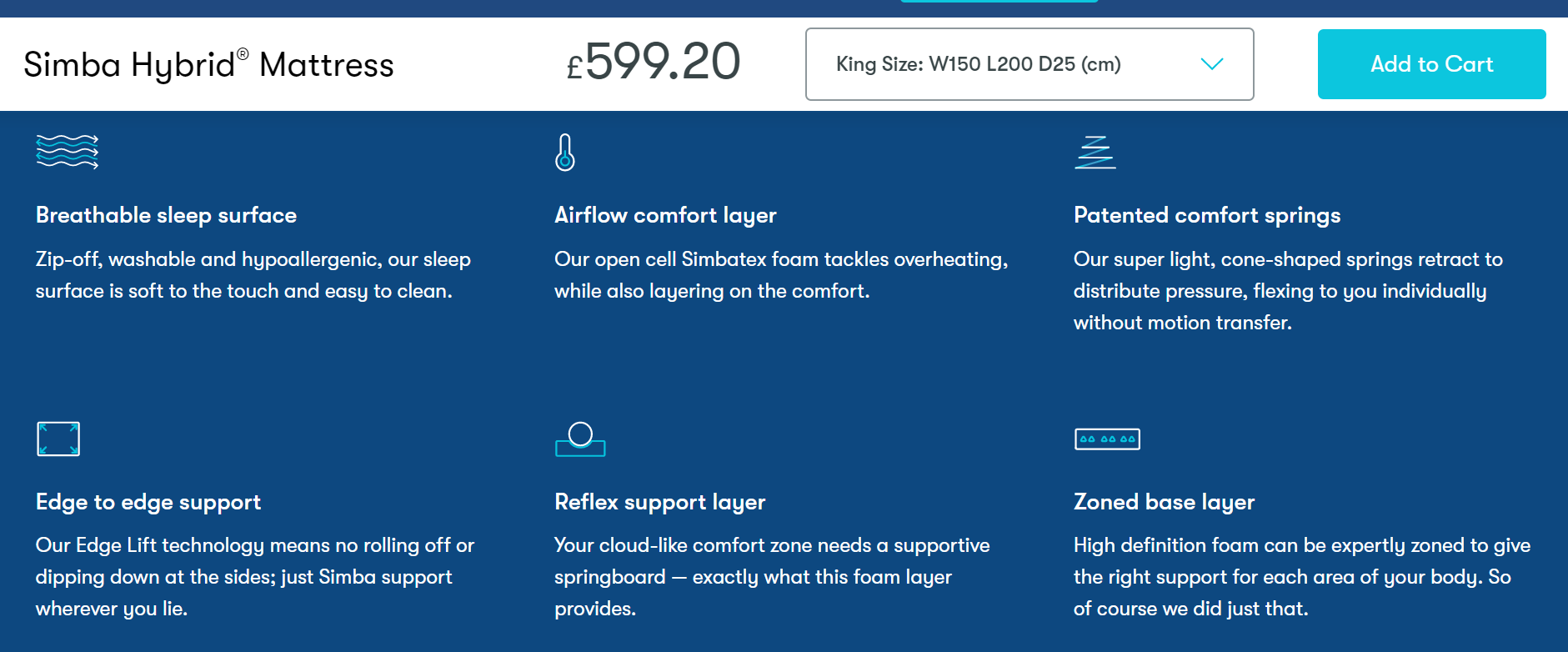
Underneath each feature, the copy expands on how the reader’s sleep will benefit, targeting one common sleep problem at a time.
If in doubt, just remember: features tell, benefits sell.
#2 Use trigger words
When it comes to creating compelling copy that converts, there are certain ‘trigger words’ that will get people clicking. When employed carefully, a single trigger word can have a strong impact on user behaviour.
You might be surprised to hear that some of the words considered to be the most persuasive in the English language are words that we say, hear and read every day:
- You – invokes the self and engages readers.
- Free – everybody loves free stuff!
Top tip: Take note though, this is a tricky one to get right, especially for premium brands. When a user is considering a premium purchase, the word ‘free’ can actually have a detrimental effect, reducing the ‘worth’ of the purchase they are considering. What’s more, the promise of free items could attract ‘bargain hunters’ who aren’t likely to add long-term value to your business. So, only use this trigger word when (and if) it makes sense for your brand.
- Because – creates an incentive for customers to take action.
- Instantly – feeds our need for instant gratification.
- New – keep customers ‘on their toes’.
These five trigger words are perfect for giving your calls-to-action, headlines and opening sentences that linguistic edge.
Other influential words that drive action include:
- Easy
- Hurry
- Improvement
- Magic
- Now
- Offer
- Original
- Quick
- Revolutionary
- Save
- Surprising
- Unique
- Winning
When it comes to writing email and event sign-up forms, consider including trigger words that encourage community. For example, words and phrases such as ‘Join’, ‘Become a member’ and ‘Come along’ provide a sense of belonging and togetherness.
Australian ‘teatox’ brand SkinnyMe Tea have made clever use of trigger words on the homepage of their Shopify Plus store:
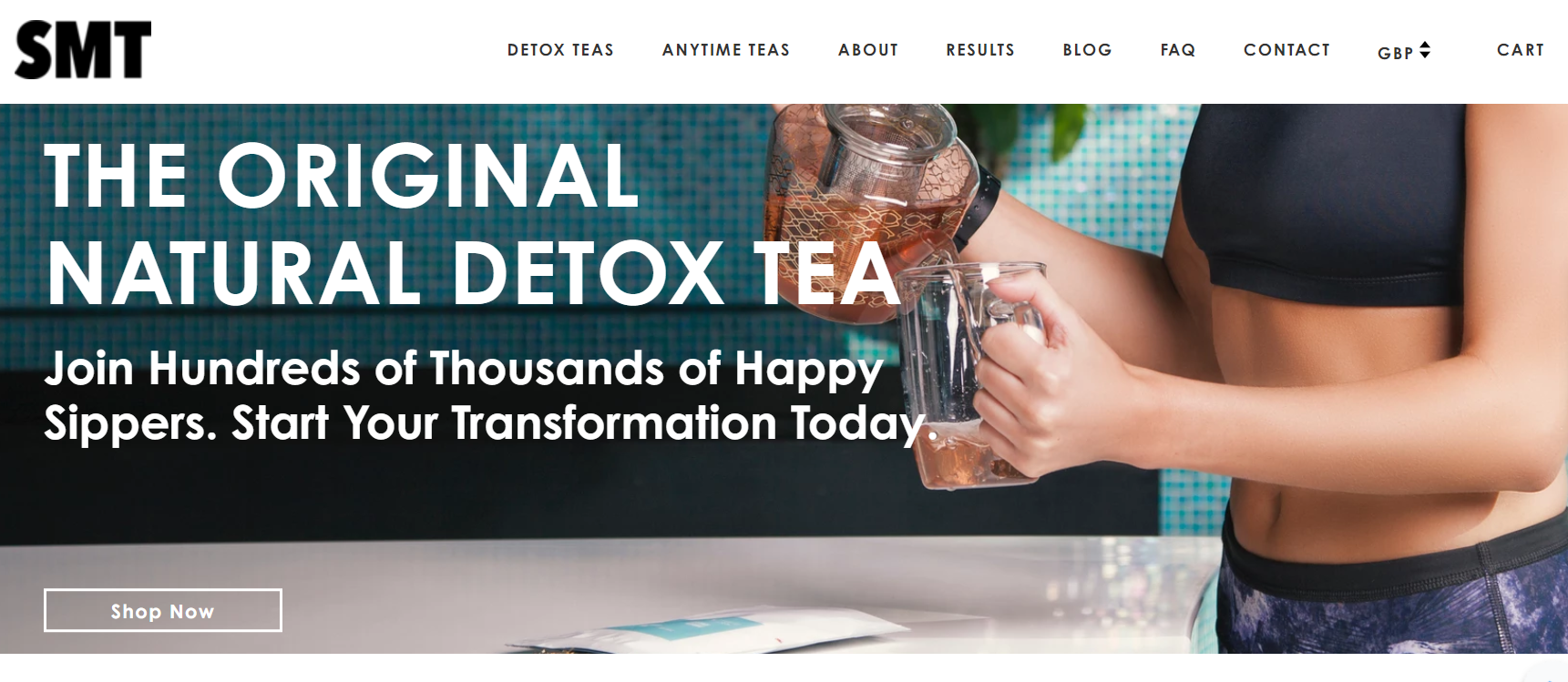
- Original – in the crowded teatox marketplace, this word evokes a feeling of authenticity, helping to build trust amongst users.
- Join Hundreds of Thousands – this communicates a sense of togetherness and makes users feel like they’re joining a movement.
- Your – connects with users on an emotional level.
- Transformation – this is a powerful word that evokes a feeling of hope and promises a better way of life.
- Today – creates a sense of urgency and draws on customers’ fear of missing out.
Of course, the trigger words you choose will depend on the action you want people to take after reading your copy. For lots more examples of trigger words that convert, check out this handy round-up.
A top tip for trigger words: use them in moderation. Make sure they slot naturally into your copy. Cramming your text with as many trigger words as possible reduces its emotional impact and can turn users off in an instant.
#3 Use the language of your customers
Your ecommerce copy needs to resonate with your target customer. Therefore, it makes sense to use the language that they would use.
Take a look at product reviews for some inspiration. How do customers describe your products? What sort of words and phrases appear frequently? You can easily repurpose snippets for use in product descriptions, emails and social media ads.
You can also engage with your existing customers via social media and support channels to get a feel for the language they use when referring to your brand.
Not only will this help you craft conversational content that connects with customers on an emotional level, it presents a useful SEO opportunity. It will help to boost long-tail keyword traffic, as it matches the language used by your target searchers.
#4 Be succinct
Your ecommerce copy needs to be short and sweet. The more fluff your readers are faced with, the more likely they are to leave the page. What’s more, you don’t have a lot of time to capture their attention and convince them to make a purchase.
Therefore, the aim is to get your core messages across as quickly and concisely as possible.
Here are some handy tips to keep in mind:
- Use short words and sentences. Complicated words and never-ending paragraphs are a sure-fire way to drive your customers away. Instead, keep things simple.
- Use bullet points. Bullet points make your copy more readable and easier to digest. Highlight key information in this format, rather than hiding them in walls of text.
- Use bolding and headers. This will make your copy scannable and draw your readers’ eyes where you want them to be looking.
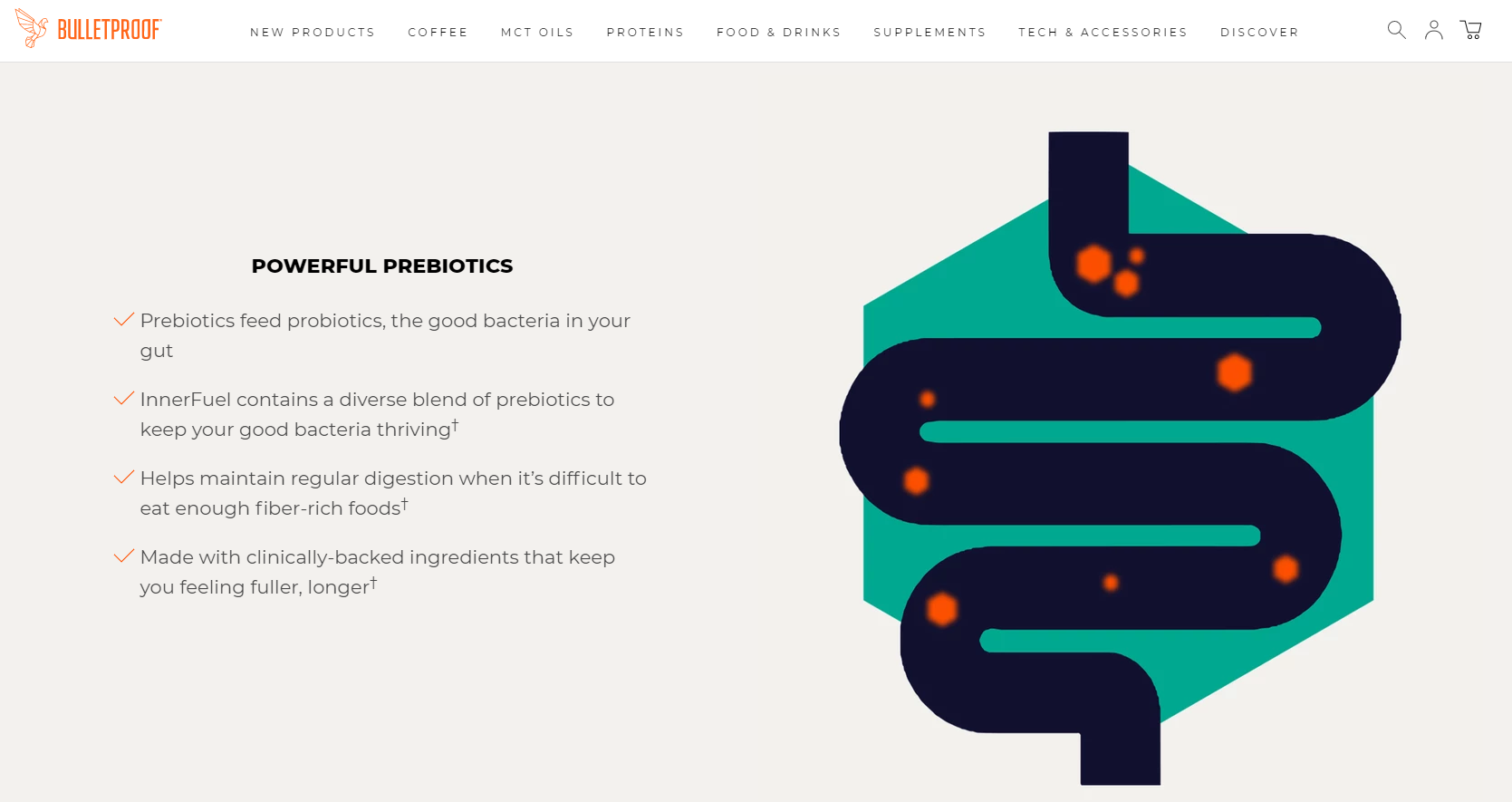
Shopify Plus retailer Bulletproof splits copy into bite size chunks that are easier to digest. Each section has a bolded header to increase scannability.
#5 Address users’ concerns
Us humans are naturally averse to loss. Our desire not to lose something is greater than the desire to gain something. As such, customers will often have immediate concerns about a product.
Use your copy to pre-empt these concerns. Build trust and confidence across the customer journey by employing these simple tactics:
- Showcase authentic feedback from happy customers. Ratings and reviews are a powerful form of social proof that demonstrate your credibility. Seeing that other people have reacted well to a product will help validate someone’s initial interest and quell any concerns they have.
- Include more FAQ language. Pre-empt customers’ questions and address them directly within your copy.
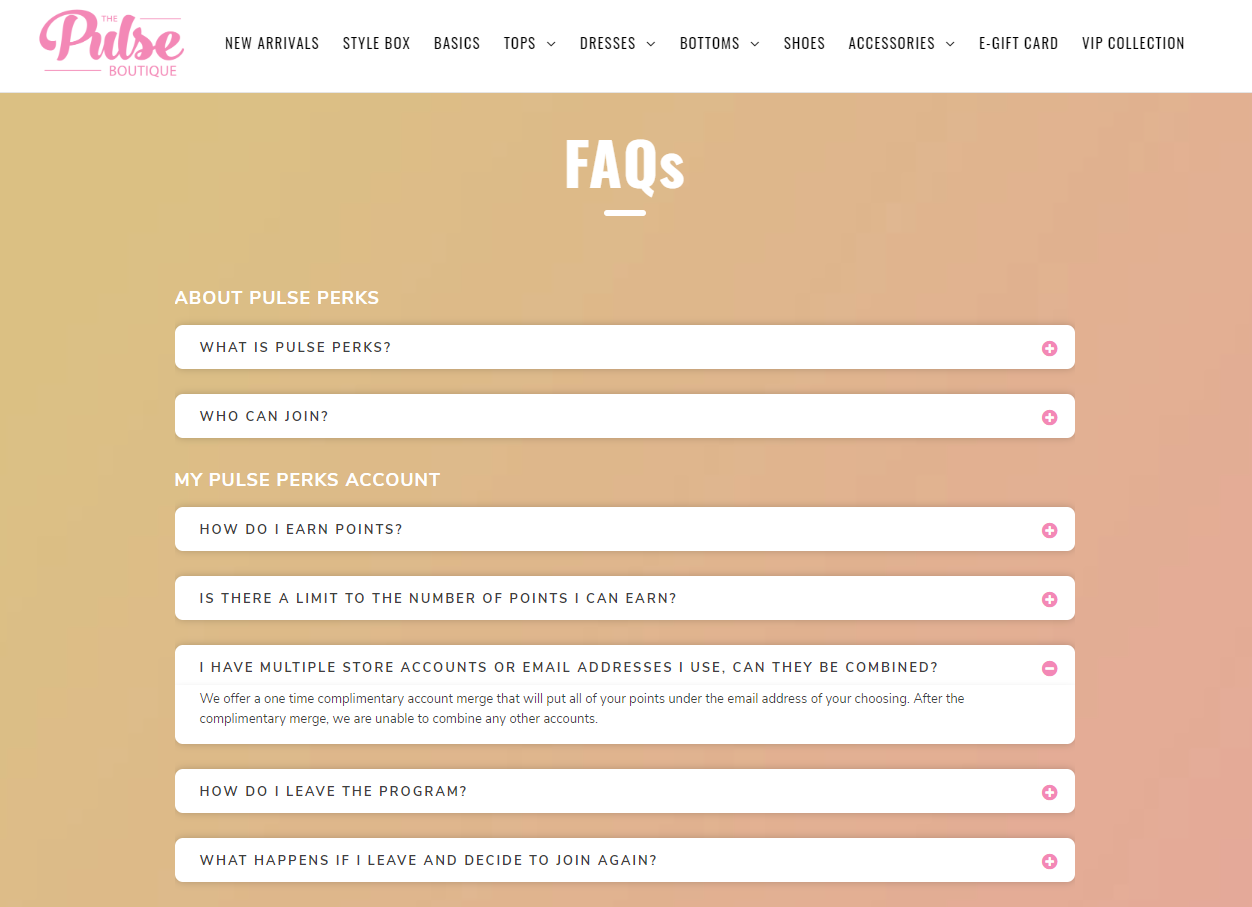
US fashion brand The Pulse Boutique have pre-empted customers’ questions about their loyalty program and provided detailed answers on the program landing page. This will help build confidence in the brand and increase customer satisfaction.
- Add trust badges on checkout screens. Fears around payments and security often present a barrier to conversion. Display trustworthy card logos prominently on your checkout page to increase customer trust in your store.
#6 Present a call-to-action
However compelling your words are, you need to present a clear next-step at the end of your copy.
Your call-to-action (CTA) represents the tipping point between bounce and conversion. Whilst its visual cues will help catch a prospect’s attention, ultimately it’s the copy that users will be interacting with.
Before you write your CTA, you need to determine your goal. What do you want readers to do?
Next, consider what your prospects’ motivations are for clicking, and what they’ll receive if they complete the desired action. What is the value proposition? Use this to form the basis of your CTA copy.
When it comes to choosing specific language for your CTA, here are some best practice ideas:
- Keep the text short, simple and straightforward.
- Use strong verbs that speak directly to the desired outcome, such as ‘Join our gang’ or ‘Book your next adventure’.
- Play around with words that increase urgency and encourage immediate action – the word ‘now’ can have a powerful influence, for instance.
- Consider changing CTA text to the first person (e.g. ‘book my place’ rather than ‘book your place’) to see how this affects your conversions. One study reported a 90% increase in click-through rate by changing from the second person to the first person!
- Get creative and consider catering your CTA copy to the specific market you’re operating in.
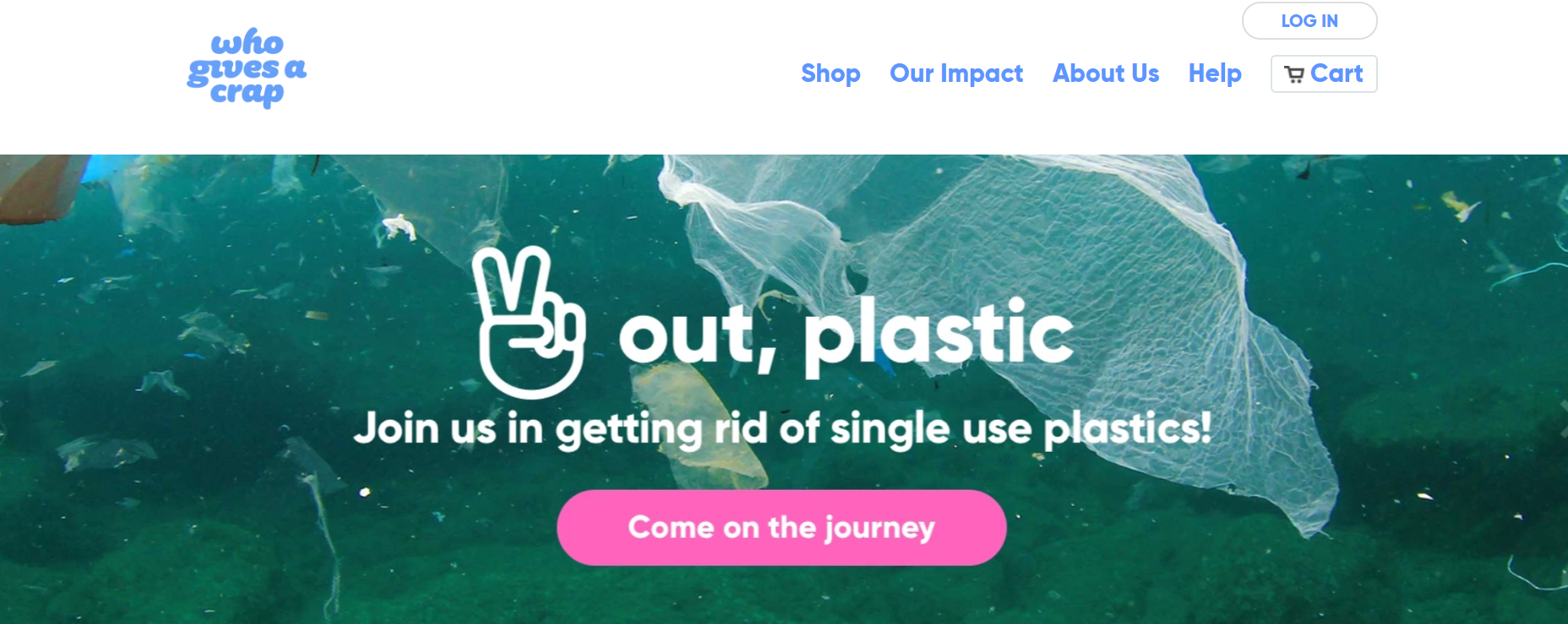
Recycled toilet paper brand Who Gives A Crap use compelling CTAs across their ecommerce store. This button copy evokes a sense of excitement, intrigue and togetherness.
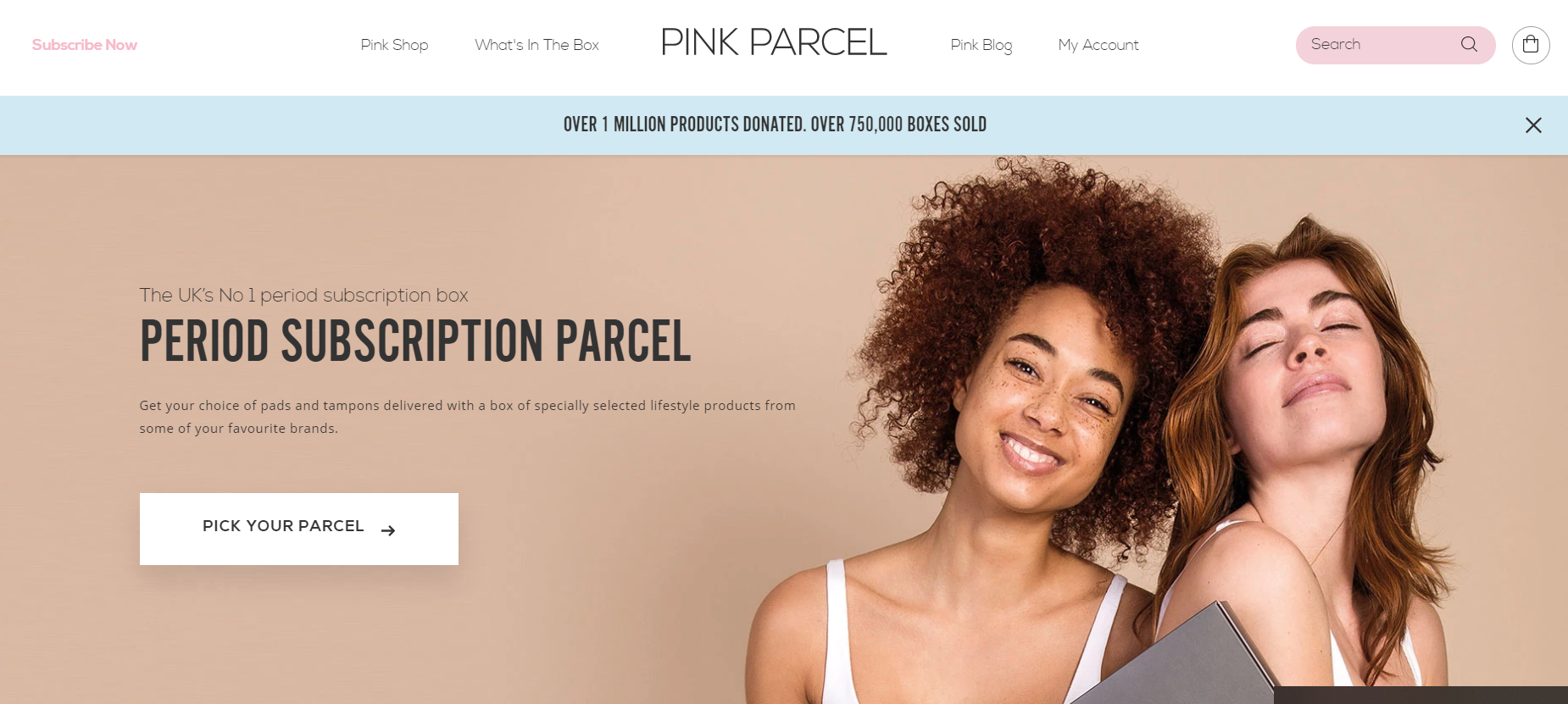
This CTA button copy on Pink Parcel’s homepage features action-oriented text to encourage clicks, whilst invoking a sense of self through the use of the word ‘Your’.
Making a minor change to your CTA copy can have a major impact on conversion rates. So, whenever you implement a tweak, don’t forget to test (more on this below)!
Check out Shopify’s guide to successful CTAs for more tips.
#7 A/B test copy changes
So, you’ve used the tricks above to create some swanky copy for your ecommerce store – great stuff. This is just the beginning though.
All too often, copy disappears under the radar when it comes to optimisation, despite its key role in user experience. For truly optimised copy, you need to be monitoring, measuring and making improvements over time.
Whenever you’re making changes to copy on your ecommerce site, don’t forget to test these amendments. Sweeping changes based on guesswork are a no-go. Instead, run A/B tests to determine which versions perform better for your given conversion goal.
A/B testing is a great way to drive additional value from your existing traffic, learn more about your customers, mitigate risk, and ultimately grow your ecommerce business faster. Find out more in our A/B Testing for Shopify explainer.
Wrapping up
So there you have it, our top tips for writing ecommerce copy that sells! Armed with these seven simple tactics, you’ll be well on the way to crafting optimised web copy that keeps those clicks coming.
Want to know more about how Swanky could help you unlock your ecommerce potential through conversion rate optimisation? Contact our friendly team of experts today!

